- Administrator
- Albums and Singles
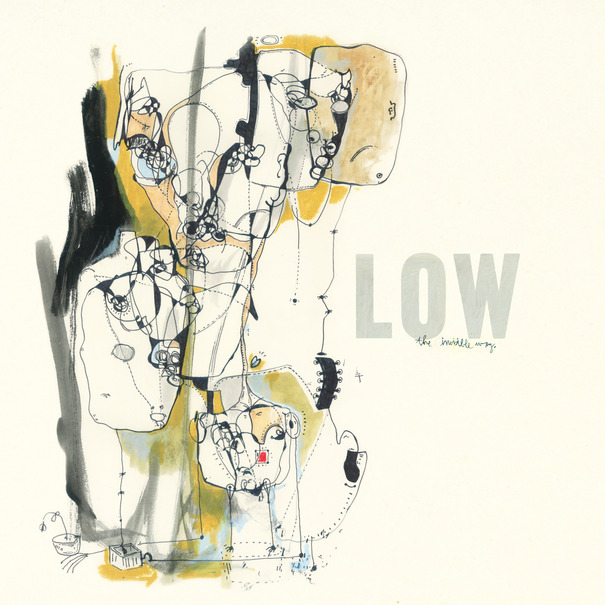 Low's newest record represents, as many past releases do for the band, an intentional and successful return to past ideas. As a listener more entrenched in their early material, this record was a welcome and familiar return to a form I recognized. Alan Sparhawk and Mimi Parker (along with Steve Garrington this time) have decided to craft The Invisible Way with a serious emphasis on empty space and atmosphere by way of Jeff Tweedy, handling production duties, and elevate the subtle country influences of much of their work to the foreground. This is a gorgeous, glacial record that tempts tearful choruses at each slow turn.
Low's newest record represents, as many past releases do for the band, an intentional and successful return to past ideas. As a listener more entrenched in their early material, this record was a welcome and familiar return to a form I recognized. Alan Sparhawk and Mimi Parker (along with Steve Garrington this time) have decided to craft The Invisible Way with a serious emphasis on empty space and atmosphere by way of Jeff Tweedy, handling production duties, and elevate the subtle country influences of much of their work to the foreground. This is a gorgeous, glacial record that tempts tearful choruses at each slow turn.
"Plastic Cup" is an excellent beginning to the album, but it is probably as fitting an opener as any other song on The Invisible Way. Low's music is all about unpacking emotions and exploring simple moments over simple structures, and their singular focus does not lend itself to a complete contour, as strange as that seems. The few exceptions lay in their transcendent moments: "So Blue" is a masterful, escalating elegy to the loss of youth and innocence, so abundant with energy it seems to escape its restricted instrumental palette, and the only fitting refrain to it is the slow country-tinged comedown of "Holy Ghost." As an album closer, "To Our Knees" does seem specifically designed to taper off with uncertainty and sadness, but so does a majority of the other material.
The musicglides between poignant sentiments indiscriminately. Parker and Sparhawk work best in slow bars, their breath held, taking the stripped down ethos of rock music and applying it to dreamy baroque pop. Tweedy's work on production duties does due credit to their songwriting, elevating that baroque aspect while also giving it an Americana tinge. Low is not cherry picking country tropes, though; Jeff's work goes to show a side of their music which was always present but never predominant until now, the ancient blues aesthetic that colors much of their vocal melodies without becoming too overplayed to feel kitsch.
Each song on The Invisible Way is like an exact idea captured in amber, so I do not really consider the context of where they are sequenced to be that important. I am led along by their intertwined melodies, and captured by the utterly palpable anguish and pain in many of them, each slow verse another chance for their affecting lyricism to shine through. On such simple arrangements, they sell desolation more effectively than ever, in whatever form it fits. It so happens that much of it relies on the piano, the stand out element of the record, which carries much of the album's strongest material. I find myself appreciating the softer chords between choruses, little human moments of empathy before the storm. There are weaker songs, sure—both Sparhawk-led songs "Clarence White" and "Mother" on this record seem a little too faltering and histrionic—but they never damage the larger image or the flow of the record. Mimi's contributions, meanwhile, are probably the best in a while from her, holding most of the vocal duties and dominating the album's most powerful points.
Low plays on familiar sentiments and does it slowly, so that the times they resonate with the listeners, they make that resonance last longer and feel more impactful. For me, this is such contexual music; the time I hear it and the way I feel when I listen to it will forever affect my perception of it. In that way, the simplicity of the music leaves so much space for interpretation. From the cryptic sorrow of the lyrics to the actual instruments used to Tweedy's keen deconstruction of their sound, Low leaves the biggest spaces in their songs as places to store your own reservations and emotions, to impart your own feelings onto their canvas. This happens again and again, beautifully and delicately.
samples:
 
Read More
- Administrator
- Albums and Singles
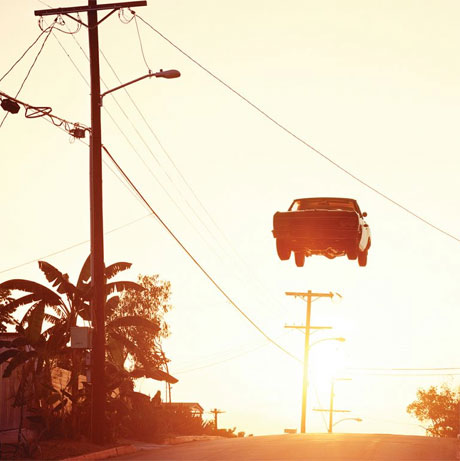 Kinski's first record in a few years sounds like a good band stuck between two polar opposite sides of their own creative influences. This time around, they lean heavy on grungy punk rock and fast tempos, leaving much of the slower bits to stagnate. The guitar work, whose slow burn melodies always seemed like a savvy subversion of their normally intended purpose, are played straight for most of the songs to compliment the lyrics. While this is definitely a new direction for the band, it is hard to say if it will be embraced by fans who preferred these elements more subtly.
Kinski's first record in a few years sounds like a good band stuck between two polar opposite sides of their own creative influences. This time around, they lean heavy on grungy punk rock and fast tempos, leaving much of the slower bits to stagnate. The guitar work, whose slow burn melodies always seemed like a savvy subversion of their normally intended purpose, are played straight for most of the songs to compliment the lyrics. While this is definitely a new direction for the band, it is hard to say if it will be embraced by fans who preferred these elements more subtly.
"Long Term Exit Strategy" might be the most misleading song to begin the album; almost a sarcastic misdirection, it is a traditionally long form Kinski space rock composition that grinds slowly against its seven minute running time like a begrudged anthem. From there, however, the band falls into a short form, punky hard rock template that it rarely escapes from. Hot headed and hooky, the next few shorter songs—especially "Last Day On Earth" and "Riff Dad"—feel gleaned from the playbook of classic grunge, and even pop punk at times. "Throw It Up" has a chugging bluesy cadence to it that might have fared better at a slower tempo, but survives well enough as a melodic garage rock workout.
Similarly, "A Little Ticker Tape Never Hurt Anybody" serves as an instrumental bridge to the end of the album, combining no wave low-distortion guitar with propulsive drumming, but it can at times feel like a play-by-numbers rehash of alt rock's most famous staples. "Conflict Free Diamonds" is a late highlight for its beckoning verses, its stutter start-and-stop melody tailored to live performances with plenty of dancing, and Kinski's irreverent lyrical sparseness, starting the song in a storyteller's focus and proceeding to fall haphazardly into an explosive solo break. "We Think She's A Nurse" is another later moment that stands out among the rest, another instrumental song that pits the album's most prominent synthesizers against the rivets of cymbals, white noise, and processed guitar, turning it into a display of glittering ambience and obfuscation that belies the rest of the album's straightforward nature.
Kinski has a strange mixture to work with on this album, trying to redeem a homogenous sound by running their own innate style into it. It is a choice a lot of bands make when they are trying to preach the quality of their core songwriting, and they have grown up listening to enough success stories to know how to play it. Still, this album is not a totally convincing effort, often slipping into vagueness when the band runs out of ideas. It survives on its strong tracks alone, which are plenty of fun, even if they never quite sound like Kinski.
samples:
 
Read More
- Administrator
- Albums and Singles
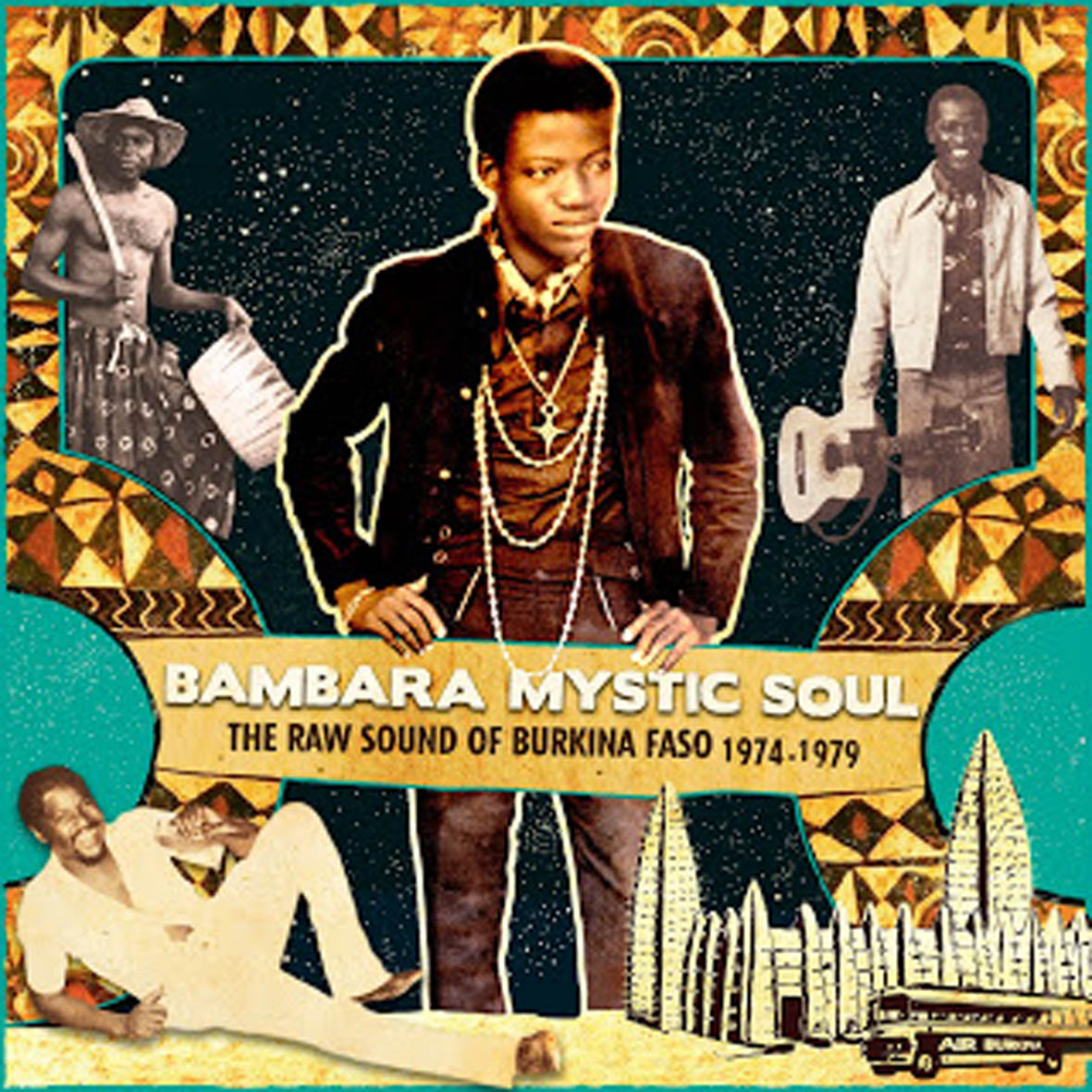 Situated right in the middle of West Africa's musical hotbed (Ghana and Nigeria are close neighbors), the country of Burkina Faso has remained relatively unanthologized thus far, a situation that Analog Africa's Samy Ben Redjeb decided to remedy after hearing Amadou Ballaké's "Renouveau."  Unfortunately, Ballaké was not exactly the tip of a great iceberg of undiscovered brilliance–he was very nearly the entire damn iceberg.  That said, there are definitely a few other good songs by other artists on Bambara Mystic Soul, but almost half of the album is consumed by Ballaké and he is very much the star of the show (deservedly).
Situated right in the middle of West Africa's musical hotbed (Ghana and Nigeria are close neighbors), the country of Burkina Faso has remained relatively unanthologized thus far, a situation that Analog Africa's Samy Ben Redjeb decided to remedy after hearing Amadou Ballaké's "Renouveau."  Unfortunately, Ballaké was not exactly the tip of a great iceberg of undiscovered brilliance–he was very nearly the entire damn iceberg.  That said, there are definitely a few other good songs by other artists on Bambara Mystic Soul, but almost half of the album is consumed by Ballaké and he is very much the star of the show (deservedly).
As is usually the case with Analog Africa compilations, the story of how this album came into being is at least as fascinating as the actual music.  For example, the aforementioned "Renouveau" record was part of a trove Redjeb unearthed in Niger, where it improbably survived for 30 years in an extremely hot and sand-filled environment where the preservation of records is basically the least of people's concerns.  Then came the requisite detective work and tireless scavenging, where he had the good fortune to locate a box containing the entire catalogue of Burkina's most popular '70s label (CVD).  Of course, he also had the very bad fortune of being mugged at gunpoint in Togo, then of being the hapless mediator between a very angry Ballaké and his former record company (who later ended up breaking Redjeb's contract by selling the same "exclusive" songs to another label).
Whether or not all that effort was worth it is hard to say, as I am a fairly casual, non-blog-scavenging fan of Africa music and see Bambara Mystic Soul as one of Analog Africa's lesser compilations, albeit one with a handful of fine songs.  For more serious fans, however, some of this material may be absolutely revelatory: Ballaké is fairly major figure in African music circles and the songs that Redjeb found are both extremely rare and from a period which many consider to be Amadou's prime (his later work is less raw).  In fact, I have even seen a blog that was excited to post a single from this period that was ripped from a damaged record–even somewhat mangled work from this period is considered well-worth hearing.  Also, after tracking down the whole CVD catalog from the scene's prime, finding and interviewing all the major players, and providing an absolutely overwhelming amount of information and background in his liner notes, Redjeb has basically dropped the definitive Burkina Faso collection: there is absolutely nothing he left that still needs to be done.  While I sure there are a number of great songs that are not included, I am equally sure that it is because they either could not be found or that Redjeb simply could not secure the necessary rights.
As aforementioned, Ballaké completely steals the show, though his numerous backing bands deserve a lot of the credit.  Though originally a percussionist, it is Ballaké's soulful voice that made him a legend.  As great as that voice is, however, I was equally impressed by the guitar-work on most of his songs, particularly the clean, hypnotically repeating riff in "Johnny" (courtesy of l'Orchestre Super Volta).  All of Amadou's included songs are invariably quite good though.  In general, Ballaké's more sultry, languorous work was with Les 5 Consuls ("Renouveau" and "Baden Djougou"), while his other incarnations are bit more funky and American soul-indebted, but there are exceptions.  Curiously, it is rare for any distinctly "African" percussion to appear, which is why this collection initially underwhelmed me a bit.  Most of Bambara Mystic Soul sounds like it could have been played by a '70s American soul or funk band, rhythm-section-wise, though it is admittedly more repetitive and raw.  Without the mesmerizing repetition and the awesome guitarists, many of these songs would sound like mere pastiches, albeit good ones.
Of course, there are some noteworthy exceptions, as the non-Ballaké selections are far from dire.  In particular, the two songs from Mamo Legbama stand out, largely because he is a very charismatic (if a bit hammy) frontman.  The hard funk of "Music, Love, and Dance" is probably his finest moment, as I especially enjoyed his amusing use of high-pitched female backing singers.  His "Zambo Zambo" is also great though, boasting a very vibrant, roiling groove and some very likable turns by his guitarist, horn section, and organist.  Mangue Konde's "Kobendo" is also quite catchy, blending breezy Highlife-style guitars with some very propulsive and spirited percussion.  The other songs that caught and held my attention usually did so for the wrong reasons though, as Compaoré Issouf's "Dambakale" sounds a lot like a relentlessly cheery soundtrack to a terrible '70s porno, while Orchestre CVD's "Rog Mik Africa" initially sounds like a live Allman Brothers jam.
The remainder of the songs are generally quite good, but mostly lack the uniqueness that I am looking for when listening to music from a faraway place and time, though a few pieces succeed simply because they appropriate American funk/soul and regurgitate it in harder, more frenzied form (Abdoulaye Cissé and Coulibaly Tidiani, for example).  Ultimately, this is a solid  and exhaustively researched compilation, which I suppose is a success, but I have been so spoiled by the recent spate of great African music compilations that I am left a little disappointed whenever there is not at least one song that sends me obsessively searching for the rest of an artist's oeuvre.  More succinctly, I respect rather than love this compilation: Redjeb certainly poured his heart into his work, but it just just did not connect with me as much as some of his others.  Other people might feel very differently, however (music is quite subjective, you know), and those lucky people will be rewarded with all the information they could possibly want to embark upon an epic scavenger hunt centered around Amadou Ballaké and his unsung contemporaries.
- Amadou Ballaké ef Le 5 Consuls, "Renouveau"
- Mamo Lagbema, "Love, Music, and Dance"
- Mange Konde et Le Super Mandé, "Kabendo"
 
Read More
- Administrator
- Albums and Singles
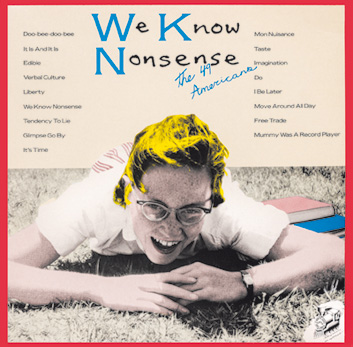 The 49 Americans were a collision of proficient, working musicians and enthusiastic amateurs, one of many projects in the often improvised history of the London Musicians Collective. The inspired, thoughtful, jaunty tunefulness of We Know Nonsense is partly inspired by Julie Andrews.
The 49 Americans were a collision of proficient, working musicians and enthusiastic amateurs, one of many projects in the often improvised history of the London Musicians Collective. The inspired, thoughtful, jaunty tunefulness of We Know Nonsense is partly inspired by Julie Andrews.
The 49 Americans had so many members that several of them never actually met the others. Such was the project’s commitment to democracy that at early concerts no one was allowed to play the same instrument from one song to the next. This meant songs took considerably less time to perform than instrument switching breaks between songs, with members consulting various charts and checklists.
The group formed at the behest of Andrew Brenner, aka "Giblet," who writes or co-writes most of the pieces on this beautiful reissue. As a teenager moving from the US to London in the late 1970s he discovered the DIY ethos where "three chords made a band, photocopying made a fanzine and putting a cassette tape onto a plastic disc made a record label." The first expression of Giblet’s creativity was to form the band Buddy Hernia and the Rickets, fusing teenage-rock parody with a gleeful celebration of inability. That sounds absolutely dreadful, but The 49 Americans were rather magnificent and would come come to make We Know Nonsense, which is included in Wire magazine’s "100 records that set the world on fire (while no one was listening)."
Giblet drew other members in as he pushed the ethos of collectivity, liberty, participation, and the notion that "Happy music doesn’t have to be dumb." The Rickets were invited to an evening watching tapes of Mary Poppins and The Sound of Music after which they created the track "Julie Andrews" for The 49 Americans’ 14 track debut single (the longest single possible - a triumph of quantity). Two unsuccessful London buskers were recruited and, at a seaside festival in Brighton, Giblet made the acquaintance of Lol Coxhill (soprano & vocals), Steve Beresford (euphonium), Peter Cusack (guitar), Paul Burwell (drums), Terry Day (cello) and Max Eastley and David Toop (african one-string fiddle) aka The Promenaders- all of whom would play in The 49 Americans, along with Viv Goldman and Viv Albertine of The Slits and many others. The names are unimportant, though, as this was to be as ego-free as possible with all involved engaged in "an experiment in the pursuit of happiness."
The discovery of the London Musicians Collective was a further catalyst, since membership meant use of a free performance space, a huge old railway building in Camden. Variant magazine has a history of the LMC told in the words of those who were in it, such people as Burwell, Ed Baxter, one of The Frank Chickens, David Toop, and far too many others to mention. What emerges is the spirit of the place with factions, hopeless membership meetings, exuberant workshops designed to "de-emphasize the soloist," or achieve collective music by "atomising" sound before reforming it into layers: all of this somehow being the grit from which pearls could sometimes be made. There were Aeolian harps tied onto the roof, revolving glass coffee tables played with chunks of polystyrene, the floor flooded to create the Mississippi river, evenings devoted to Inuit culture and so on.
Attending the LMC, as non-or relatively inept musicians meant some conflict with the original free-jazz guys who had first used the place, but also a welcome and patient collaboration between those highly proficient and adventurous musicians who saw value in sharing energy and ideas with newcomers. It also meant having to nip next door to a film collective’s place to use the bathroom - since toilets were not included in the LMC space.
From the outside, if anyone else was aware of its existence, presumably the political Left might have mistakenly thought this communal space would encourage staunch protest and deep sincerity, while the Right could have incorrectly assumed that it was a hotbed of political correctness where alternate versions of nursery rhymes deemed offensive were being incubated, along with the the occasional paeon to the entire rainbow of sexualty. Against this backdrop, and that of the early years of Thatcherism, it is deeply satisfying to imagine The 49 Americans, primed by an evening watching the full-on antics of the Von Trapp Family or Dick van Dyke, launching into their tunes, for no better reason than their own enjoyment and just for the very doing of it.
This CD version of We Know Nonsense comes with 23 bonus tracks from their debut LP and EP across a range of styles: bossa nova, African tin-whistle, doo wop, scratchy punk-funk, and more. The songs mainly concentrate on clear and thoughtful vocals, however, which allows them to almost float above influence and genre. The singing is flat at times but always has a quizzical charm. The title track, along with "Liberty," "It's Time," and the wonderful "I Be Later," are exuberant, crafty, humble and joyous recordings. A greater proportion of the more proficient musicians were used for We Know Nonsense, as the group decided they wanted it to be their best possible effort. This is cheerful yet erudite music, a free and easy mix of philosophy and polite exclamation with an overriding sense of democratic participation and a strong insistence upon its inherent lack of importance.
The history and legacy of the London Musicians Collective is also the topic of Get a Haircut And Disappear, a radio documentary by Nick Hamilton with a broad range of music and interviews with Clive Bell, David Toop, Paul Burwell, Ed Baxter and others. It was originally broadcast on Resonance.FM, a station which to a great extent revels in the adventurous spirit and welcoming ethos of the Colllective.
Read More
- Administrator
- Albums and Singles
 On this terse (ten minutes exactly) little 7" single, Canada's master of harsh noise walls indulges in his sonic obsessions once again. Sam McKinlay proves that for a style associated with monochromatic approaches, there is much more to be explored, even if edges just so slightly into uncomfortable.
On this terse (ten minutes exactly) little 7" single, Canada's master of harsh noise walls indulges in his sonic obsessions once again. Sam McKinlay proves that for a style associated with monochromatic approaches, there is much more to be explored, even if edges just so slightly into uncomfortable.
Sourced from the sounds of wood, knives, and nylon and paired with the cover art, Sam McKinlay is definitely going for the giallo horror theme that defines his Vice Wears Black Hose collaboration with Richard Ramirez."Dark Eyebrow Angled Toward the Nylon" is classic Rita: sharp, serrated waves of sound that is overdriven into fatiguing, clipping levels.It stays pretty much the same throughout its five minutes:at low volumes it makes for a nice study in abrasive textures.Cranked up, it is as jarring and punishing as any good harsh noise should be.
The other side of the vinyl, "Dark Eyebrow Angled Toward the Thigh," is actually a bit more spacious, if still overwhelmingly oppressive as it goes on.The noise is pushed even more into the jagged, sawtooth realms to almost sound more like hardware glitches and malfunctions rather than harsh noise.Film dialog is introduced, sometimes intelligible and other times not, but eventually becomes overwhelmed by the noise that, again, is unpleasant in the best possible way until it finally devolves into a traditional harsh noise wave of white noise and reverberated static.
Rather than just sounding like a broken AM radio (like much of this subgenre does), McKinlay layers his sound distinctly, often overdriven to the point of only the smallest fragments of noise become audible. This is a great single that does exactly what it should without any pretense.I would have not been able to handle much more than a 7" single, however, and I mean that as a compliment!
Read More
- Administrator
- Albums and Singles
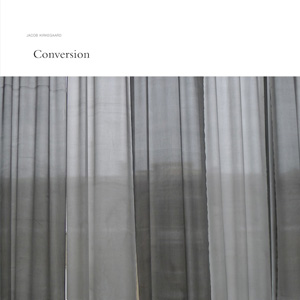 As an artist, Kirkegaard has made it his focus to create art that is as disconnected from emotion or traditional musicality as possible. Which makes the premise for this album all the more compelling: two of his previous works are rearranged and presented using classical instrumentation by the Scenatet ensemble. The resulting work is much more akin to his initial compositions than a traditional classical recording.
As an artist, Kirkegaard has made it his focus to create art that is as disconnected from emotion or traditional musicality as possible. Which makes the premise for this album all the more compelling: two of his previous works are rearranged and presented using classical instrumentation by the Scenatet ensemble. The resulting work is much more akin to his initial compositions than a traditional classical recording.
"Labyrinthitis II," originally released as a stand-alone piece in 2008, is based on the notion that when perceiving sound, the human ear creates a unique internal frequency, which formed the basis of the original album.Unsurprisingly, this does not carry over explicitly when recreated via strings and horns.What does shine through, however, is a sense of intermingling sound waves resonating amongst one another.Without paying explicit attention, it is almost hard to believe that such traditional instrumentation could be generating these sounds.
The other piece on the album, "Church II," is based upon a piece from his 4 Rooms album in 2006.Originally a recording of silence within a Chernobyl church and then played back and rerecorded in the same space, here it conjures the same mood.Echoing, distant roars of percussion fill hollow spaces, creating an effective sense of scope from an architectural standpoint, and of cold desolation.
The resonating sounds grow and become heaver, oppressive and uncomfortable.A sense of abstract and disconnected drone is prominent. It sounds like a natural phenomenon, generated from anything but organic instruments.When the more overt strings finally come in, they simply conjure up a sense of dread and depression, a perfect sonic accompaniment to the barren, lifeless location in which the first recording was collected.
Both Kirkegaard and Scenatet deserve high praise for Conversion, for the former his unique sense of concept and composition, and the latter for translating it from field recordings and electronic works into distinct compositions that redefine the type of sound classical instrumentation can produce.Even detached from the original material it was based on, Conversion stands alone as a beautiful piece of sound art.
samples:
 
Read More
- Administrator
- Albums and Singles
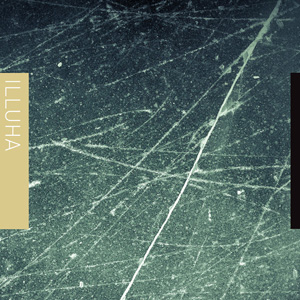 Acting as its title would indicate as a bridge between their debut work, Shizuku, and an upcoming second effort, Interstices is a mix of improvisations, sketches, and experimentation that was all captured live. It does not come across as a taut, conceptual album focused on composition, nor is it consistently random or unfocused. Instead it is a slow drift through experimentation and improvisation that at times feels a bit random, but comes together quite well.
Acting as its title would indicate as a bridge between their debut work, Shizuku, and an upcoming second effort, Interstices is a mix of improvisations, sketches, and experimentation that was all captured live. It does not come across as a taut, conceptual album focused on composition, nor is it consistently random or unfocused. Instead it is a slow drift through experimentation and improvisation that at times feels a bit random, but comes together quite well.
One of the underlying concepts for Illuha's work is the use and misuse of various tools, musical and otherwise, into a free improvisation type context.Unlike many who work with these methods, everything is kept at a close, hushed level and never becomes boisterous or aggressive.These pieces have a distinctly intimate sensibility—as I listen it sounds as if I was in the same room as it was being performed.
"Interstices I (Seiya)" comes across as the most basic of the three long performances that make up the album.Initially it is rather bleak, dark, and sparse.Bits of feedback and occasional piano or twinkling sounds break up the tension, and the oddly spoken word segment seems out of place.However, the lighter, uplifting transition toward the middle and the guitar-centric closing helps keep some sense of composure.
Somewhere in the middle is the simultaneously chaotic and relaxed "Interstices II".While everything is kept at that quiet, intimate volume, a world of clinking sounds, strings, and droning electronics are scattered about in free form improvisation.Amidst the acoustic guitar plucks and the wet, synthetic drips, there is a relaxed, calm sense maintained, like a slow drift down a lazy river on a hot summer’s day.
The longer closer "Interstices III" feels, of the three, the most focused and composed piece.Starting from a basic palette of drawn out elongated noises, a sense of development emerges rather quickly in the performance. A lot of variation and structuring continues without losing a sense of Illuha improvisation. As a result, it becomes a tighter, more focused work that would not be out of place in an album context.
As an intermediary work (such as it is intended), Interstices accomplishes its job admirably, especially considering this is live material.While at times it does seem to lack the focus and structure I would expect to hear on a fully realized album from the duo, it never feels overwrought or unnecessary.While disjointed and tentative at times, this is not something that would only appeal to the most ardent of fans and thus acts as a great teaser for their 2014 release.
samples:
 
Read More
- Administrator
- Albums and Singles
 There are certainly a number of fine labels currently trawling record bins in Jamaica, Africa, South America, and Southeast Asia in search of great lost, unheard, or forgotten music, but Soundway compilations (particularly the African ones) are almost always my favorites.  The reason for that is quite simple: Miles Cleret and his collaborators are especially adept at 1.) knowing a great song when they hear it,  and 2.) making damn sure that there are a number of such songs on every single collection they release.  Unsurprisingly, Kenya Special continues that hot streak, being every bit as essential as their classic Ghana and Nigeria collections.
There are certainly a number of fine labels currently trawling record bins in Jamaica, Africa, South America, and Southeast Asia in search of great lost, unheard, or forgotten music, but Soundway compilations (particularly the African ones) are almost always my favorites.  The reason for that is quite simple: Miles Cleret and his collaborators are especially adept at 1.) knowing a great song when they hear it,  and 2.) making damn sure that there are a number of such songs on every single collection they release.  Unsurprisingly, Kenya Special continues that hot streak, being every bit as essential as their classic Ghana and Nigeria collections.
Unlike some other compilations of great regional African music, the 32 songs compiled for Kenya Special are rooted in a time of relative prosperity and stability.  Kenya was far from a dull place politically in the '60s, owing to their newfound independence from England and a war with ethnic Somalis, but Nairobi was very much a thriving city with a booming tourist industry by the time of these recordings.  Tourists, of course, need to be entertained, so many talented West African musicians wound up playing Afro-beat and American soul covers in the city's finer hotels.  Predictably, that fateful collision of cultures eventually yielded its own thing, as intrepid musicians soon began finding ways to combine those tourist-friendly sounds with their own distinctively Kenyan styles of Benga and Rumba/Lingala (and they also found that Nairobi was an easy place to quickly record and release records).  While this compilation includes a few classic examples of those two "native" styles, most of the focus is upon the less-easily categorized cross-pollination that followed.
As a non-expert in African music, I found the sheer number of intermingling styles (chakacha rhythms, taarab music, etc.), regions, languages, and bands represented on Kenya Special a bit overwhelming, but my dim understanding of what is actually happening did not prevent me from enjoying the music at all.  While there is certainly lot of variety on display, the primary recurring stylistic theme that most of these songs share is a tight, killer rhythm section (as well as a refreshing tendency towards relative brevity).  In general, combining a traditional, percussion-heavy African rhythm with a thick, funky bass line seems to be an especially winning formula (Loi Toki Tok's "Ware Wa" being a fine example), particularly when that groove is bolstered by instrumental flourishes like great sax playing (Slim Ali & the Famous Hodi Boys) or dueling flute and organ solos (The Mombasa Vikings).  Other bands shine in very different ways though, such as The Lulus Band with the clean guitar stabs and train-like snare roll of "Ngwendeire Guita."
The most memorable pieces, however, take a bit more dramatic detours from the expected.  Predictably, my favorite piece on the entire album (Orchestre Baba National's "Sweet Sweet Mbombo") opens with an amusingly ridiculous monologue in heavily accented English, but everything else about the song is equally spectacular.  Hafusa Abasi & Slim Ali's "Sina Raha," on the other hand, stands out both for being one of the only songs to feature a female vocalist and for being noticeably influenced by Arabic music.  The Rift Valley Boys also tread rather unique territory with their "Tiga Kurira," which flogs an insistently moronic groove so thoroughly and so exuberantly that it actually becomes perversely infectious and likable.
As is usual for Soundway, the liner notes are very informative, thorough, and well-written, providing all of the context and biographical information that I could possibly need to delve into these artists more thoroughly on my own.  Sadly, no one has a particularly lurid or improbable backstory this time around, but it was still fascinating to learn that artists worldly enough to be appropriating American funk and soul could still write songs discouraging women from drinking alcohol or marrying outside their immediate community.  I was also surprised to learn that many songs were sung in Swahili rather than local dialects in order to avoid alienating rival tribes.  In any case, the music itself (compiled by Miles Cleret, Johan Fredrik Lavik and Rickard Masip) could not be better.  The worst I can say is that a lot of the good songs sound similar to one another and that there are not as many truly great songs as there have been on some of Soundway's other comps (i.e. The World Ends), but those "flaws" are easily balanced out by a near-total lack of weak or even average material.
- Hafusa Abasi & Slim Ali with The Yahoos Band, "Sina Raha"
- Orchestre Baba National, "Sweet Sweet Mbombo"
- The Rift Valley Boys, "Tigra Kurira"
 
Read More
- Administrator
- Albums and Singles
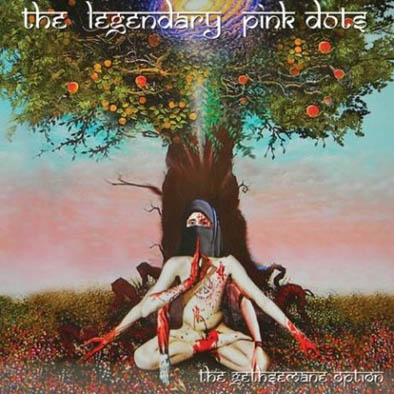 To the casual observer, it probably seems like either Edward Ka-Spel or The Legendary Pink Dots release (or re-release) an album just about every other week these days, but there has not actually been a major new LPD album since 2010's oft-brilliant Seconds Late for the Brighton Line.  While The Gethsemane Option does not quite measure up to that illustrious predecessor, it still boasts enough high points to make serious fans fairly happy.  Less serious fans probably only need to hear a few of the better pieces, but it is clear that Ka-Spel and company set out to deliver a coherent, deliberately sequenced album-sized dose of their signature skewed psychedelia and that its shortcomings are mostly the result of over-ambition.
To the casual observer, it probably seems like either Edward Ka-Spel or The Legendary Pink Dots release (or re-release) an album just about every other week these days, but there has not actually been a major new LPD album since 2010's oft-brilliant Seconds Late for the Brighton Line.  While The Gethsemane Option does not quite measure up to that illustrious predecessor, it still boasts enough high points to make serious fans fairly happy.  Less serious fans probably only need to hear a few of the better pieces, but it is clear that Ka-Spel and company set out to deliver a coherent, deliberately sequenced album-sized dose of their signature skewed psychedelia and that its shortcomings are mostly the result of over-ambition.
Appropriately enough, given their new home of Metropolis Records, "A Star is Born" opens the album on a brooding, quasi-industrial note, mixing a muted drum-machine groove, somber synthesizers, space-y studio tricks, creepily evocative lyrics, and sporadic bursts of static and noise to create a haunted and hallucinatory pop gem.  Initially, that impressive momentum continues unabated with "The Garden of Ealing," as it appealingly begins with squelching electronic percussion and an effectively enigmatic and surreal collage of movie/TV samples.  Gradually, it coheres into what is almost yet another fine song, as Ka-Spel's melody and lyrics are both quite strong and the underlying music maintains a nicely simmering degree of muted mindfuckery.
Unfortunately, the album's first signs of bloat and indulgence start to appear as well and they become an increasingly distracting issue as the album progresses, mostly manifesting themselves in meandering, overlong songs; over-the-top vocals; lengthy improvised passages; curiously dated textures; and rare instances of very ill-conceived lyrics.  Those shortcoming are doubly exasperating on this particular album because they are mingled with so many strong ideas and sustained bursts of inspiration.
As a result, most of these songs are mixed successes, but there are a couple of very low lows that I cannot even listen to all the way though, particularly the sing-song major key melody of "Esher Everywhere," which is additionally torpedoed by some '80s rock guitar soloing and very '70s prog synth noodling.  Equally misbegotten is the closing "One More Dimension," which clocks in at nearly ten minutes and painfully devotes much of its running time to Ka-Spel counting dimensions and clumsily, pointlessly rhyming ("Just two more dimensions, too many now to mention").
"One More Dimension" aside, however, the second half of The Gethsemane Option is actually fairly strong.  For example, the throbbing "Grey Scale" boasts some wonderful experimental weirdness in its periphery, along with some delightfully cryptic and paranoid-sounding Ka-Spel stream-of-consciousness and a woozy theremin.  The propulsively buzzing, grinding, and burblingly psychotropic "A Stretch in Time" scores yet again, offering up some instrumental passages that easily rank among LPD's best.  Still another high point is the 11-minute "Pendulums," which is basically just Ka-Spel delivering a very creepy, unnerving monologue over the slow pulse of a heartbeat and a deep clock chime.  It is marred somewhat by both its running time and some quizzical choices in synthesizer textures, but Edward is utterly magnetic when he is at his spoken-word best and the bed beneath him is the perfect foil for his storytelling (and for the gently roiling and whooshing maelstrom of spaciness that follows it).
Despite those successes (roughly half the album), The Gethsemane Option is ultimately a mild disappointment to my admittedly pessimistic ears, but it is a complicated one and my expectations were perhaps unreasonably high given the heights that some of LPD's recent work has reached (particularly The Creature That Tasted Sound and The Silverman's Finisterre).  There was definitely no shortage of inspiration or vision for this album, as nearly every song boasts a few excellent motifs and it all seems to flow together as a cryptically connected whole, but the band definitely had a hard time actually shaping all those ideas into great songs: only "A Stretch in Time" and "A Star is Born" manage to make it all the way through their running time without succumbing to the band's more eccentric and indulgent tendencies.  Of course, those tendencies are an inherent and essential part of the Dots' aesthetic, playing as much a role in their distinctiveness and success as they do in their mis-steps.  Some other LPD albums certainly strike a more favorable balance of those extremes, but The Gethsemane Option is still mostly a fine effort.
 
Read More
- Administrator
- Albums and Singles
 No one could ever say that the short-lived late '70s/early '80s minimal wave scene had a shortage of weirdos or eccentrics, categories in which this Philadelphia trio were prize specimens.  Fortunately, they were also kind of brilliant and have been remarkably influential for a band that only managed to release seven songs before breaking up.  While their more unhinged debut 7"certainly had its moments, this 1981 EP contains their two most enduring classics.
No one could ever say that the short-lived late '70s/early '80s minimal wave scene had a shortage of weirdos or eccentrics, categories in which this Philadelphia trio were prize specimens.  Fortunately, they were also kind of brilliant and have been remarkably influential for a band that only managed to release seven songs before breaking up.  While their more unhinged debut 7"certainly had its moments, this 1981 EP contains their two most enduring classics.
Amusingly, when I first became interested in this band, I looked them up on one of my favorite resources for obscure '80s music (Trouser Press) and saw that their entire oeuvre was summarily dismissed with one word ("grating").  Taken in any kind of large dose, that assessment is not wildly off the mark, but Crash Course in Science can also sound quite bracing, original, and vibrant when absorbed in moderation.  In any case, certainly something profoundly different was happening on this EP and the world probably was not ready for it at the time of its release.  Much of that singularity stems from CCIS's decision to eschew actual musical instruments in favor of toys and appliances.  That might not sound completely radical in today's post-noise musical landscape, but it actually still is: lots of bands may abandon instrumentation, but few do it so completely, and I cannot think of any that still attempt to make something resembling pop music.  It is incredibly hard to make catchy pop music without any kind of melody.
That said, the opening "Cardboard Lamb" does make some minor concessions to human ears: it has a very insistent one-note bass line, vocals, and an actual beat.  Of course, it also has plenty of white noise and some rather absurdist, minimal vocals (courtesy of Mallory Yago), but it was actually still catchy enough to become something of a minor club hit in the '80s.  More interestingly, it sounds an awful lot like LCD Soundsystem's "Losing My Edge," which cannot be a mere coincidence (despite CCIS failing to be one of the lucky bands James Murphy name-dropped in that song).
The trio scored yet another club hit with "Flying Turns," which some might remember as one of the absolute best songs on Stones Throw's The Minimal Wave Tapes, Volume I.  For me, "Flying Turns" is the single best example of why this band is so wonderful, as it is based upon little more than a simple metallic-sounding beat, something that sounds like a lunch whistle at a factory, and Yago's deadpan speak-singing and it sounds great: no clutter, no artifice, no development–just a relentlessly propulsive groove strafed by heavy industrial sounds.
The rest of the original EP was rounded out by the more caustic "Crashing Song" and "Factory Forehead," both of which are inspired, but lack the appeal of the EP's "poppier" moments.  "Factory Forehead" in particular is impressively heavy and unhinged by 1981 standards, sounding like Throbbing Gristle jacked-up to punk rock speed and intensity (as opposed to a misanthropic crawl).  Interestingly, the version of Signals from Pier Thirteen that is currently available (Schematic's 2011 reissue) appends two recent remixes (of "Cardboard Lamb" and "Flying Turns," naturally) that take Crash Course's sound in a very contemporary and professional direction, a decision that I find somewhat mystifying and very unnecessary.  I guess the remixes are ok and basically inoffensive, but they smooth over all of the bizarre quirks and character that made the songs great in the first place: it was not the songwriting that made "Cardboard Lamb" sound amazing, it was the entire aesthetic.
Releases like this make me deeply nostalgic for the days of 7"s and singles, as it is hard to imagine a band like Crash Course in Science getting noticed today: DJ culture aside, the current musical climate does not seem to have any place for bands that can do one extremely limited thing extremely well for a short burst.  The best moments of this EP are truly singular and wonderful, achieving a perfect blend of youthful exuberance, bold experimentation, humor, naiveté, obnoxiousness, rawness, and simplicity (and usually keeping it all under 3 minutes to boot).  Curiously, Crash Course in Science recorded a very likable full-length (Near Marineland) immediately after this EP that would have doubtlessly yielded a few more "hits" (like this one, for example), but it did not get mixed or released until Vinyl-on-Demand stepped forward to release a much-needed retrospective in 2009.
 
Read More
- Administrator
- Albums and Singles
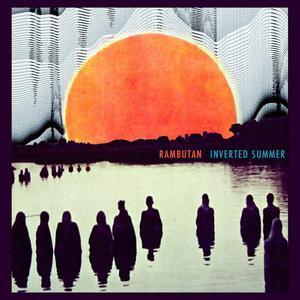 As the solo guise of Eric Hardiman, Rambutan is a more distilled abstraction of the psych tendencies he demonstrates in the rock-oriented Century Plants and improvisational quartet Twilight of the Century. Here, on his first full-length foray into the world of vinyl, he delivers an extremely diverse and polished work, bringing in elements from his other projects while still retaining his own personal sound and approach to music.
As the solo guise of Eric Hardiman, Rambutan is a more distilled abstraction of the psych tendencies he demonstrates in the rock-oriented Century Plants and improvisational quartet Twilight of the Century. Here, on his first full-length foray into the world of vinyl, he delivers an extremely diverse and polished work, bringing in elements from his other projects while still retaining his own personal sound and approach to music.
Throughout the album, there are some consistent elements of late 1960s/early 1970s electronic psychedelia that never resemble anyone in particular per se, but captures the mood and the spirit of the times beautifully.The short, echoing blips that form a rudimentary rhythmic foundation for "Time Garden" have that primitive synth sound nailed down, while odd melodies that almost have a classic rock tinge to them mingle with the occasional abstract electro acoustic outburst.
This repetition of psychedelic phrases appears heavily on "Floodlights," although throughout the song they seem to slowly come unwound, becoming more and more chaotic and disheveled as time clicks away."Frozen Flower" also leans heavy into flanged and tremolo heavy passages, with an emphasis on Hardiman's guitar playing, although it stays relatively low in the mix."Topology" captures a different mood entirely via its bleaker, dissonant passages of sound and reverberating outbursts that makes for one of the darker moments contained within.
From its title, Inverted Summer inescapably called to mind Fennesz's Endless Summer, but the material does not run all that parallel.There are the occasional similarities, like the heavily processed guitar and drum machine beat of "Viaduct" evolving into a similar abstraction of pop music, albeit here with an electronic didgeridoo accompaniment.The lighter, sun drenched electronics that swell in "Shallow Motion" also resemble that laconic, summer vibe, but here it is slow to rise from gritty electronics and distended guitar distortion.
Those are likely just happenstance, however, and I think it is less a matter of direct following than it is two creative artists who happen to work heavily with guitar doing their own thing.While some elements of Hardiman's other projects appear throughout Inverted Summer, never does it sound like anything that would fit better under a different moniker.It is entirely Hardiman's touch, and it shines as a brilliant piece of modern psychedelic experimentation.
samples:
 
Read More

